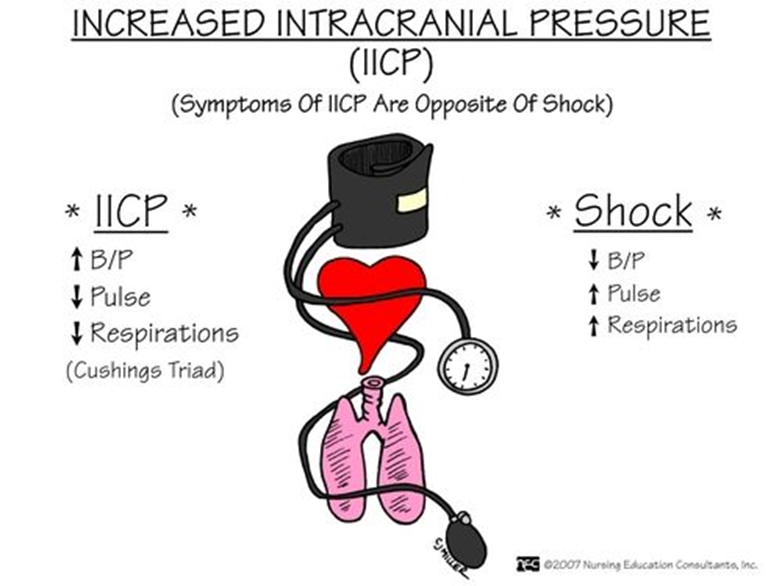A nurse is caring for a client in the emergency department who has a preliminary diagnosis of a transient ischemic attack (TIA). Which of the following diagnostic testing should the nurse anticipate the provider to prescribe?
Computerized tomography angiography (CTA)
Complete blood count (CBC)
Prothrombin time (PT)
Transesophageal echocardiogram (TEE)
The Correct Answer is A
A.Computerized tomography angiography (CTA)
This is a likely diagnostic test that the provider may prescribe. CTA uses computed tomography (CT) imaging to visualize the blood vessels in the brain and neck. It can help identify areas of stenosis, occlusion, or other abnormalities in the blood vessels that may contribute to the TIA symptoms.
B. Complete blood count (CBC)
A complete blood count (CBC) is a routine laboratory test that assesses various components of blood, such as red blood cells, white blood cells, and platelets. While it may not be specific to diagnosing a transient ischemic attack (TIA), it can help evaluate for underlying conditions such as anemia or thrombocytosis that could contribute to TIA symptoms or increase the risk of stroke.
C. Prothrombin time (PT)
Prothrombin time (PT) is a laboratory test that evaluates the clotting ability of blood and is typically used to monitor anticoagulant therapy. While abnormal coagulation parameters may be associated with certain conditions that predispose to TIA (such as atrial fibrillation), PT alone is not a specific diagnostic test for TIA.
D. Transesophageal echocardiogram (TEE)
This is another possible diagnostic test that the provider may prescribe. TEE is a specialized echocardiogram that provides detailed images of the heart structures by inserting an ultrasound probe
Nursing Test Bank
Naxlex Comprehensive Predictor Exams
Related Questions
Correct Answer is B
Explanation
A. Decreased pedal pulses:
Decreased pedal pulses are not typically associated with increased intracranial pressure. Instead, they may indicate peripheral vascular disease or reduced perfusion to the lower extremities. Monitoring peripheral pulses is important for assessing circulation but is not directly related to intracranial pressure changes.
B. Hypertension:
Hypertension can be a manifestation of increased intracranial pressure. The body may respond to elevated intracranial pressure by increasing blood pressure to maintain cerebral perfusion pressure. However, hypertension alone is not specific to increased ICP and can have various causes.
C. Peripheral edema:
Peripheral edema is not a typical manifestation of increased intracranial pressure. It may occur in conditions such as heart failure or renal dysfunction but is not directly related to intracranial pressure changes following a craniotomy.
D. Diarrhea:
Diarrhea is not a common manifestation of increased intracranial pressure. Increased ICP is more likely to manifest with symptoms such as headache, nausea, vomiting, altered level of consciousness, and focal neurological deficits.

Correct Answer is C
Explanation
A. Perform passive range of motion on each extremity:
While passive range of motion exercises are important for preventing contractures and maintaining joint mobility in immobilized clients, they are not the highest priority in this situation. Airway management takes precedence over mobility exercises.
B. Monitor the client's electrolyte levels:
Monitoring electrolyte levels is important for overall assessment and management of the client's health, but it is not the highest priority when the client's airway and breathing are compromised.
C. Suction saliva from the client's mouth:
This is the correct answer. Suctioning saliva from the client's mouth helps maintain a clear airway and prevents aspiration. Unconscious clients are at risk for pooling of oral secretions, which can obstruct the airway and lead to respiratory complications.
D. Record the client's intake and output:
While monitoring intake and output is an essential part of nursing care, it is not the highest priority when the client's airway and breathing are compromised.
Whether you are a student looking to ace your exams or a practicing nurse seeking to enhance your expertise , our nursing education contents will empower you with the confidence and competence to make a difference in the lives of patients and become a respected leader in the healthcare field.
Visit Naxlex, invest in your future and unlock endless possibilities with our unparalleled nursing education contents today
Report Wrong Answer on the Current Question
Do you disagree with the answer? If yes, what is your expected answer? Explain.
Kindly be descriptive with the issue you are facing.
